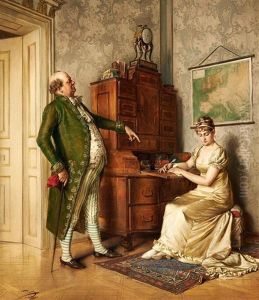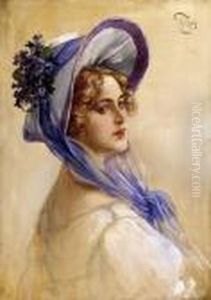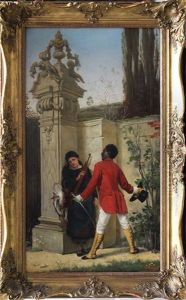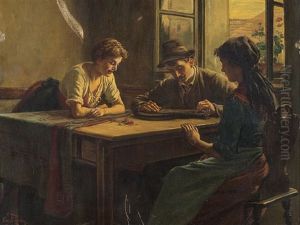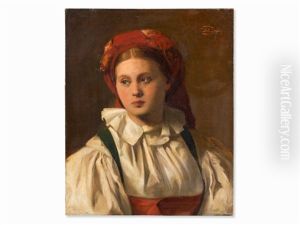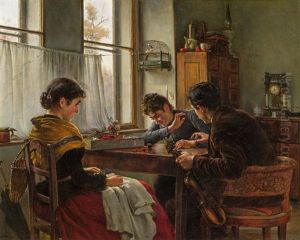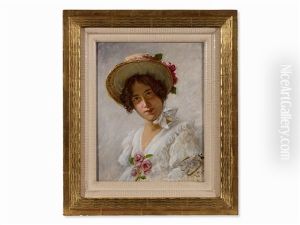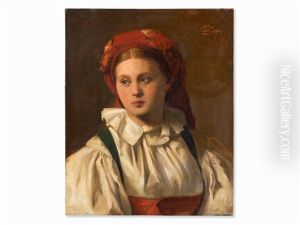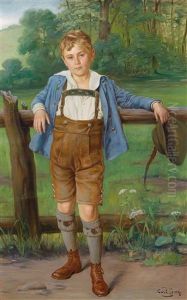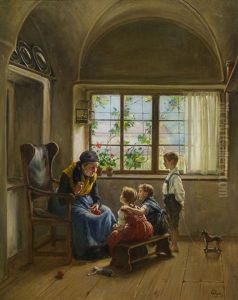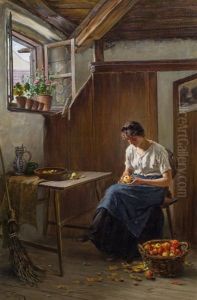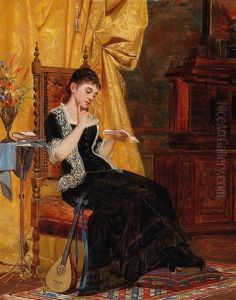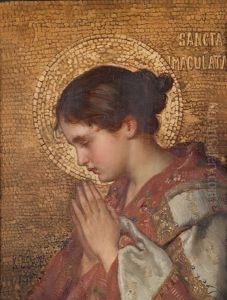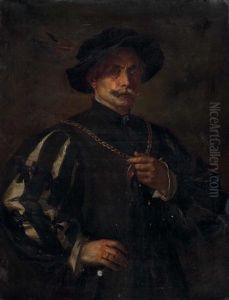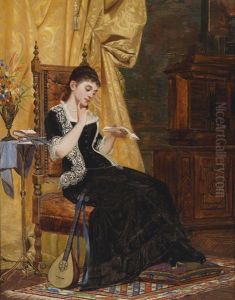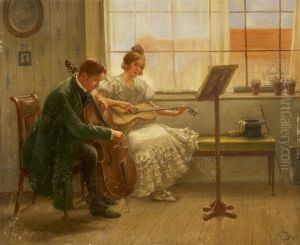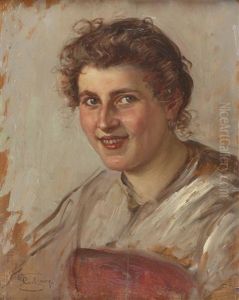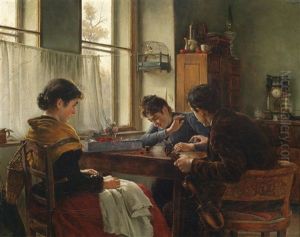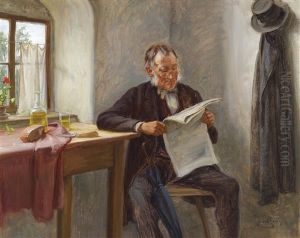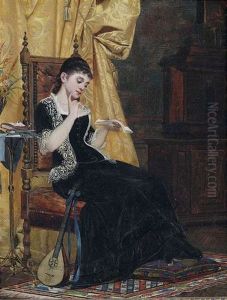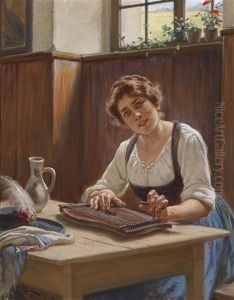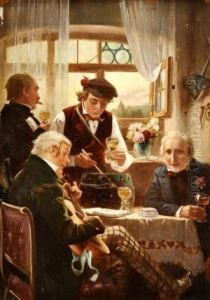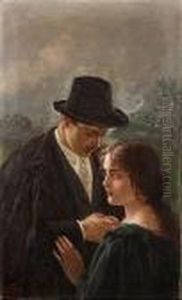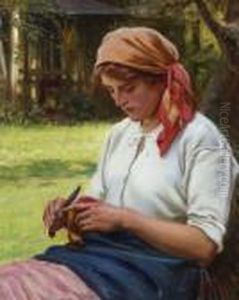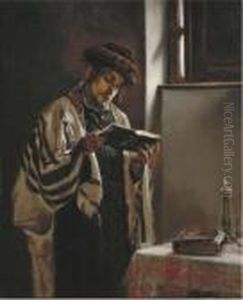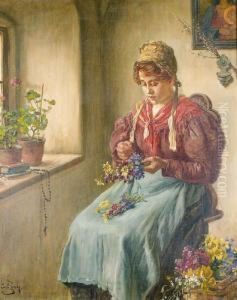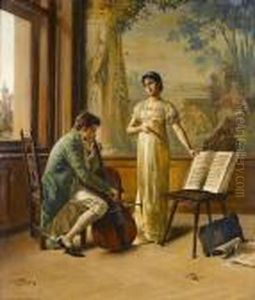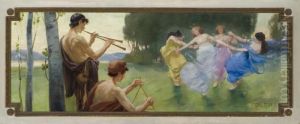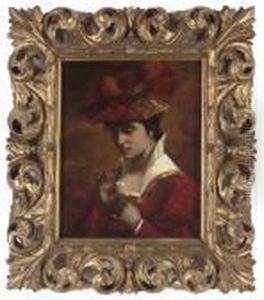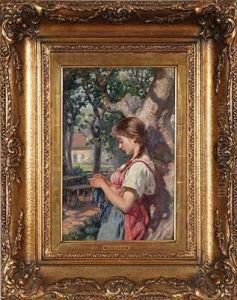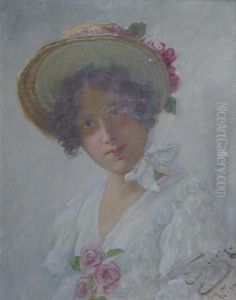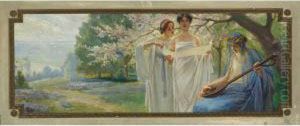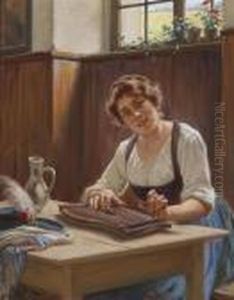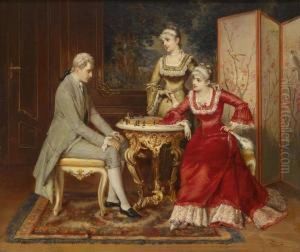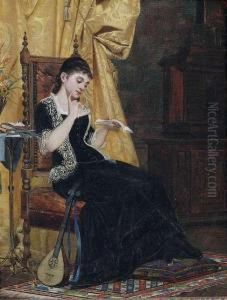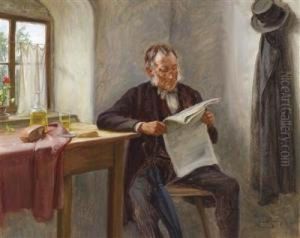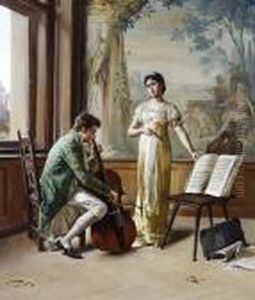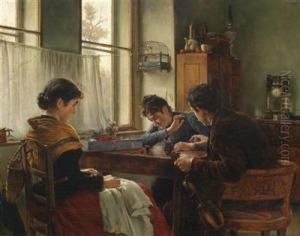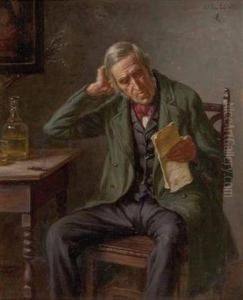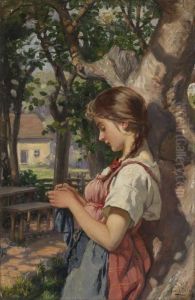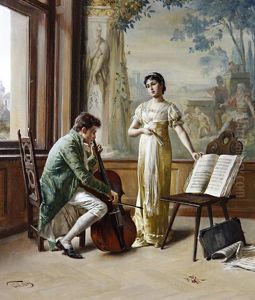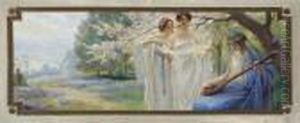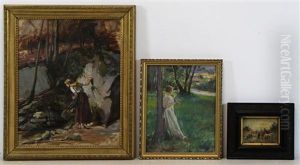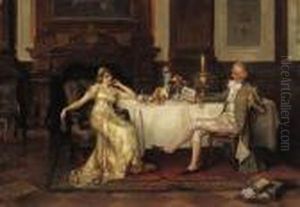Carl Zewy Paintings
Carl Zewy was an Austrian painter known for his genre paintings and portraits, born in 1855. He worked primarily in Vienna and was associated with the Viennese Secession movement, although he did not gain the same level of fame as some of his contemporaries like Gustav Klimt or Egon Schiele. Zewy's style was characterized by a delicate use of color and a focus on light, often capturing the subtleties of human expression and the nuances of everyday life.
Zewy received his artistic education at the Academy of Fine Arts Vienna, where he honed his skills in drawing and painting. Throughout his career, he exhibited his works in various galleries and salons, gaining a respectable reputation among art collectors and critics. His paintings often depicted the bourgeois life of the time, offering insights into the social customs and fashions of the Viennese elite.
In addition to genre scenes and portraits, Zewy also produced a number of landscapes and still lifes. His landscapes conveyed a sense of tranquility and were often imbued with a romantic atmosphere, while his still lifes demonstrated his ability to capture intricate details and textures.
Despite his talent and the quality of his works, Carl Zewy remained somewhat overshadowed by the more prominent figures of his time. Nonetheless, his contributions to Austrian art were significant, and his works are still appreciated today for their elegance and charm.
Carl Zewy continued to paint until his death in 1929. His art has been featured in posthumous exhibitions and can be found in private collections and museums throughout Austria and beyond. He is remembered as a skilled painter who captured the essence of the fin-de-siècle Vienna with sensitivity and finesse.
